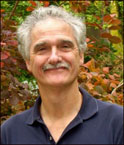 Attempts to reduce greenhouse gas (GHG) emissions are more complex than they first appear. Reports in the mass media tend to focus on carbon dioxide (CO2). The United Nations Framework Convention on Climate Change (Framework Convention) focuses primarily on six GHGs, including CO2 as well as methane (CH4), nitrous oxide (N2O), hydrofluorocarbons, perfluorocarbons, and sulfur hexafluoride (SF6). Climate change scientists have identified hundreds of GHGs, with widely varying sources, relative contributions to climate change (numerical “global warming potential (GWP)”, where CO2 is defined as 1.0), and total contribution based on emitted volumes.
Attempts to reduce greenhouse gas (GHG) emissions are more complex than they first appear. Reports in the mass media tend to focus on carbon dioxide (CO2). The United Nations Framework Convention on Climate Change (Framework Convention) focuses primarily on six GHGs, including CO2 as well as methane (CH4), nitrous oxide (N2O), hydrofluorocarbons, perfluorocarbons, and sulfur hexafluoride (SF6). Climate change scientists have identified hundreds of GHGs, with widely varying sources, relative contributions to climate change (numerical “global warming potential (GWP)”, where CO2 is defined as 1.0), and total contribution based on emitted volumes.
California has been a global leader in climate change prevention initiatives, with programs addressing widely varying sets of GHGs and sources. On September 19, California’s Governor Jerry Brown signed legislation requiring important additional steps to manage “short-lived climate pollutants (SLCPs)” that have high GWPs. Earlier studies estimate that these chemicals account for about 12% of net climate change effect of all GHGs emitted in the state, so significant reductions in these categories could make a meaningful difference in statewide emissions – and if replicated could provide comparable reductions in other jurisdictions on a much wider scale.
Which GHGs Are “Short-Lived Climate Pollutants”?
Legislation enacted in 2014 established a policy focus on SLCPs. SB 605, requires the California Air Resources Board (ARB) to design a comprehensive strategy to reduce emissions of SLCPs, which are defined as “an agent that has a relatively short lifetime in the atmosphere, from a few days to a few decades, and a warming influence on the climate that is more potent than that of carbon dioxide.” ARB issued its proposed Strategy in April 2016. The Proposed Strategy includes the following SCLPs, which together account for roughly 12% of statewide emissions’ contribution to climate change (measured as carbon dioxide equivalent (CO2e) based on GWPs):
-
Methane (GWP = 25; 9% of statewide emissions) – primarily from agriculture and landfills
-
Black carbon (GWP = 480-2900, 3% of statewide emissions) primarily from vehicles and fireplaces/stoves
-
Fluorinated gases (GWP = 675-12,200, 3% of statewide emissions) primarily from refrigerants and aerosol uses (including chlorofluorocarbons and hydrofluorocarbons).
As air pollutants, they may also have additional effects, noticeably localized health impacts from black carbon and methane.
What Will California Require, and When?
The 2014 legislation required ARB to accomplish the following by January 1, 2016, in consultation with experts in government, academia, industry and the community:
-
Complete an inventory of sources and emissions of short-lived climate pollutants in the state based on available data.
-
Identify research needs to address any data gaps.
-
Identify existing and potential new control measures to reduce emissions.
-
Prioritize the development of new measures for short-lived climate pollutants that offer co-benefits by improving water quality or reducing other air pollutants that impact community health and benefit disadvantaged communities.
-
Coordinate with other state agencies and districts to develop measures identified as part of the comprehensive strategy.
The April 2016 Proposed Strategy addresses these directives, but missed the statutory deadline. The new 2016 legislation responds to these accomplishments and delays by making guidance clearer and more emphatic. Revised responsibilities include:
-
Complete the Strategy by January 1, 2018, including:
-
Set targets to reduce SLCP emissions by the following shares, by 2030 compared with 2013:
-
Methane and fluorinated gases by 40%
-
(Anthropogenic) black carbon by 50%
-
- Consult with experts and stakeholders
-
Incorporate technical and economic considerations
-
-
Set targets for reduce landfill disposal of organics (which produce significant methane emissions):
-
50% below 2014 levels by 2020
-
75% below 2014 levels by 2025
-
-
Consult with stakeholders on the following
-
Develop manure management operations to reduce methane emissions from the livestock and dairy sectors to 40% below 2013 levels by 2030
-
By January 1, 2018 cooperate with the Public Utilities Commission and Energy Commission to develop infrastructure development and procurement policies to encourage dairy biomethane projects.
-
-
Cooperate with California’s Department of Resources Recycling and Recovery (CalRecycle; which regulates non-hazardous waste management and disposal) supporting CalRecycle efforts to adopt regulations by January 1, 2018 providing for the organic waste emission reductions identified above.
Implementation Checklist
Does the organization conduct activities that use and/or emit any of the short-lived climate pollutants addressed by these new California requirements?
-
Methane
-
Black carbon
-
Fluorinated gases
Has the organization evaluated its activities to determine whether and how to reduce emissions of these gases?
Where Do I Go For More Information?
-
ARB’s Short-Lived Climate Pollutant web portal (includes Proposed Strategy)
-
ARB Climate Change Programs web portal
-
SB 1383 text online
Specialty Technical Publishers (STP) provides a variety of single-law and multi-law services, intended to facilitate clients’ understanding of and compliance with requirements. These include:

About the Author
 Jon Elliott is President of Touchstone Environmental and has been a major contributor to STP’s product range for over 25 years. He was involved in developing 13 existing products, including Environmental Compliance: A Simplified National Guide and The Complete Guide to Environmental Law.
Jon Elliott is President of Touchstone Environmental and has been a major contributor to STP’s product range for over 25 years. He was involved in developing 13 existing products, including Environmental Compliance: A Simplified National Guide and The Complete Guide to Environmental Law.
Mr. Elliott has a diverse educational background. In addition to his Juris Doctor (University of California, Boalt Hall School of Law, 1981), he holds a Master of Public Policy (Goldman School of Public Policy [GSPP], UC Berkeley, 1980), and a Bachelor of Science in Mechanical Engineering (Princeton University, 1977).
Mr. Elliott is active in professional and community organizations. In addition, he is a past chairman of the Board of Directors of the GSPP Alumni Association, and past member of the Executive Committee of the State Bar of California's Environmental Law Section (including past chair of its Legislative Committee).
You may contact Mr. Elliott directly at: tei@ix.netcom.com.
